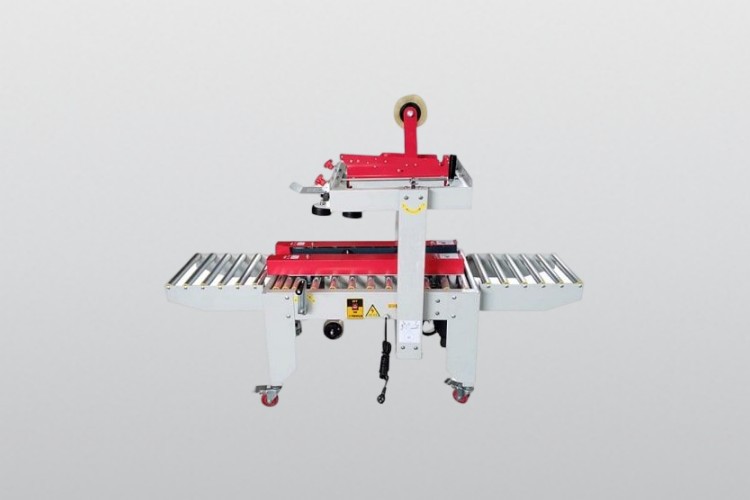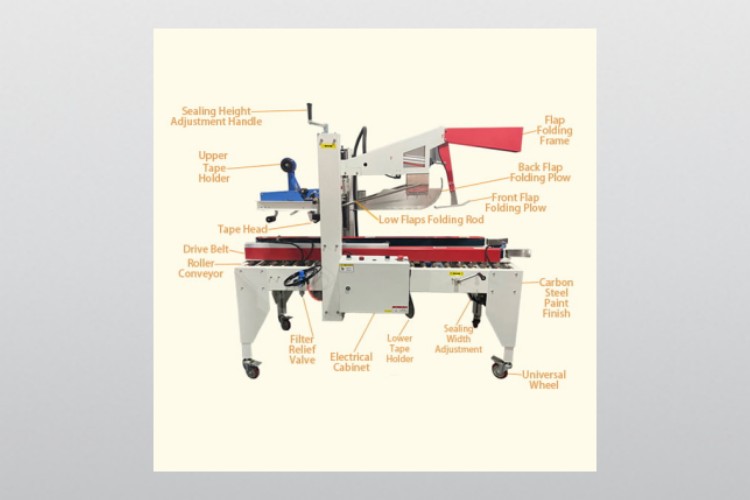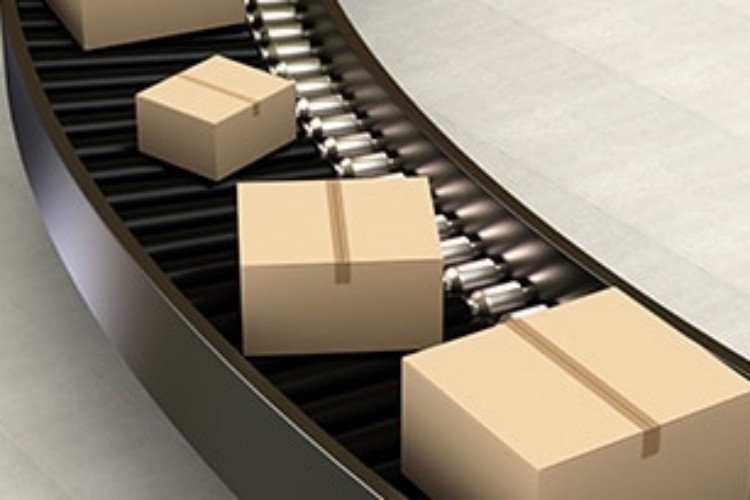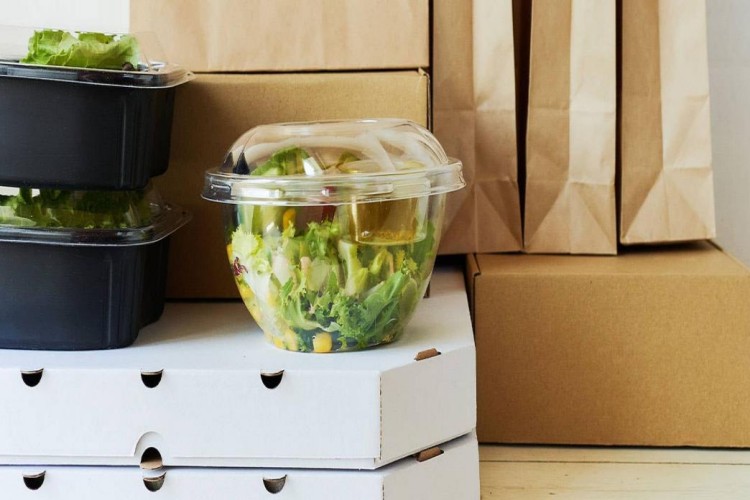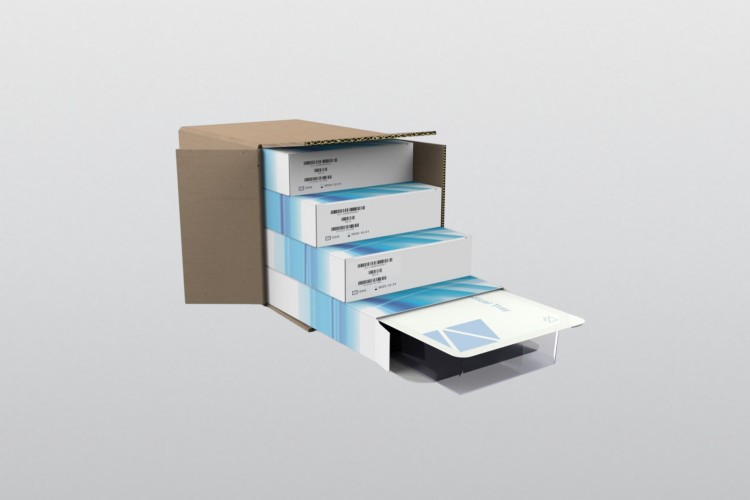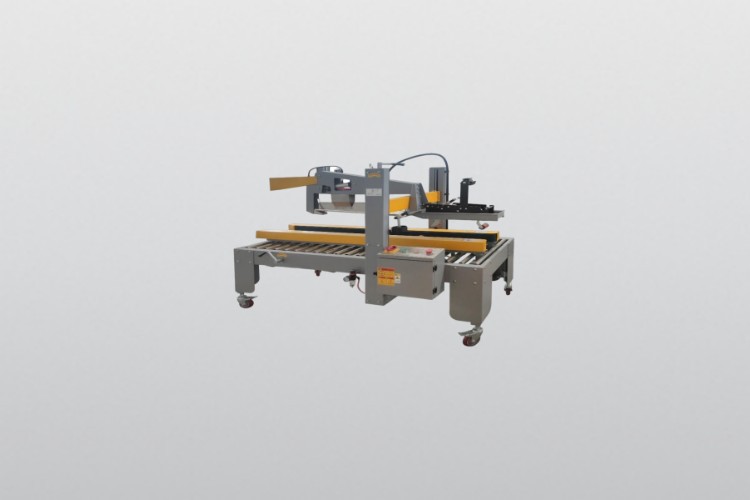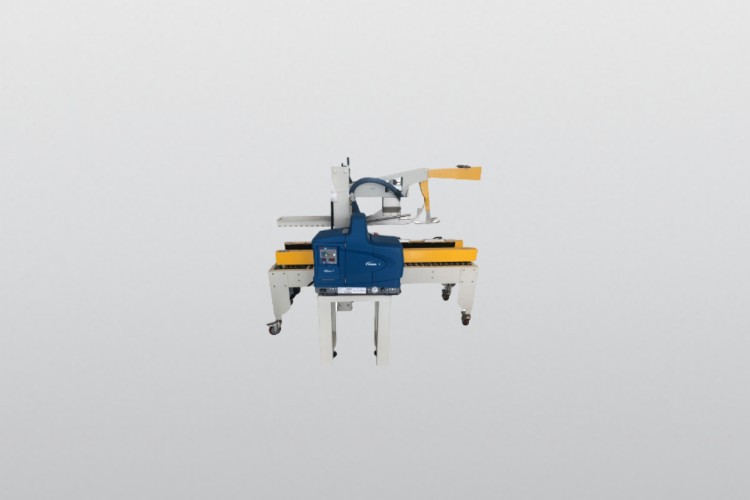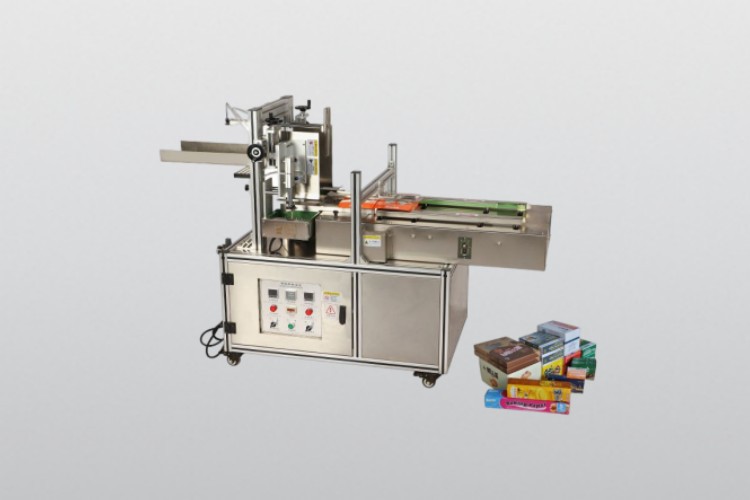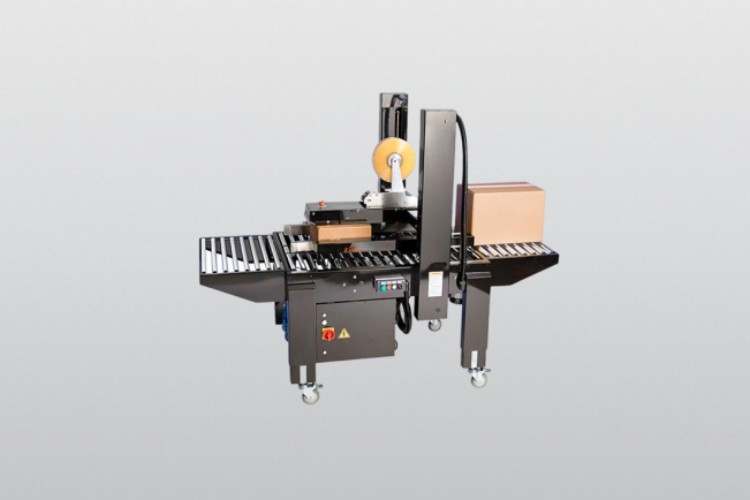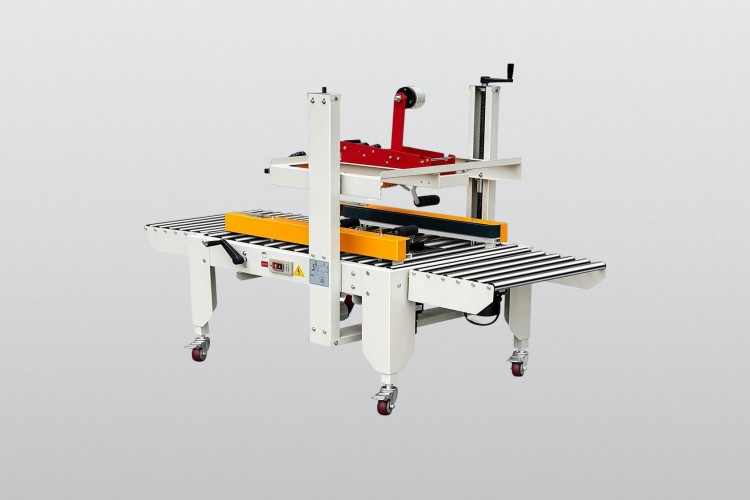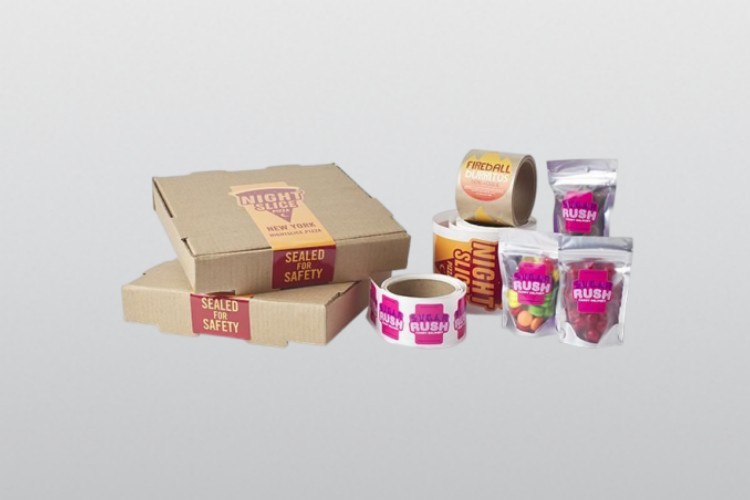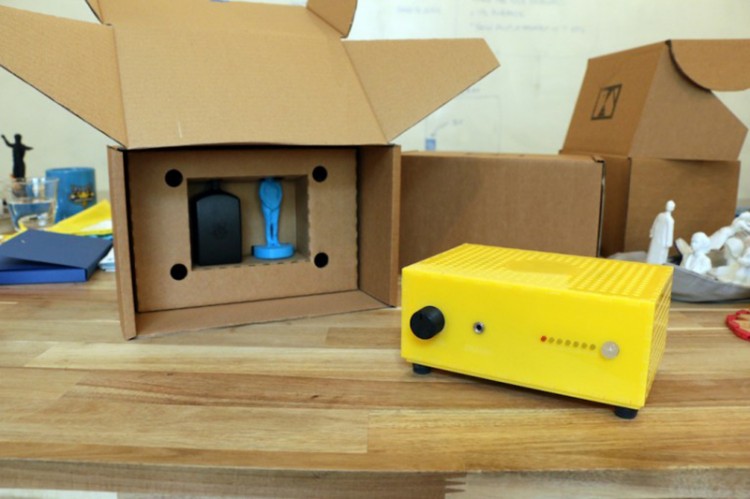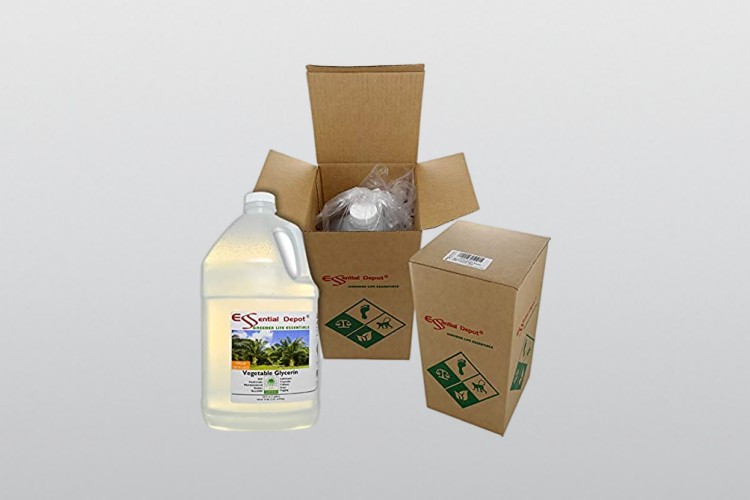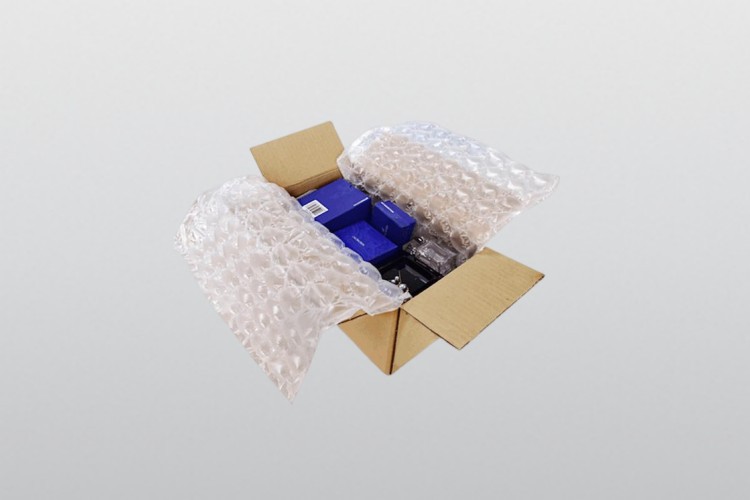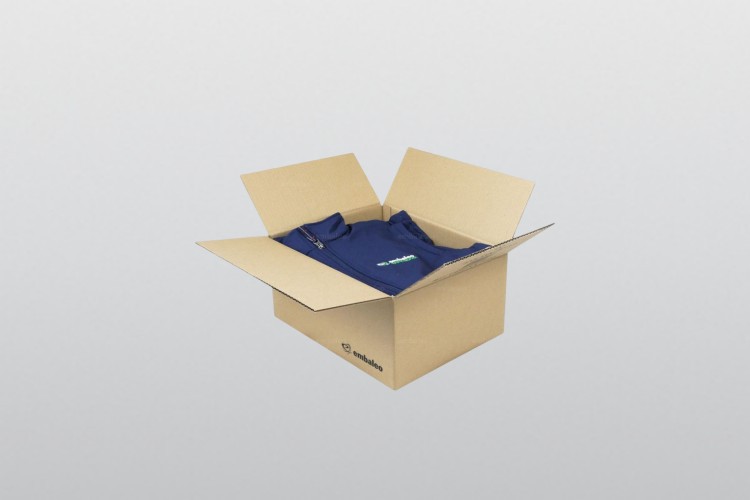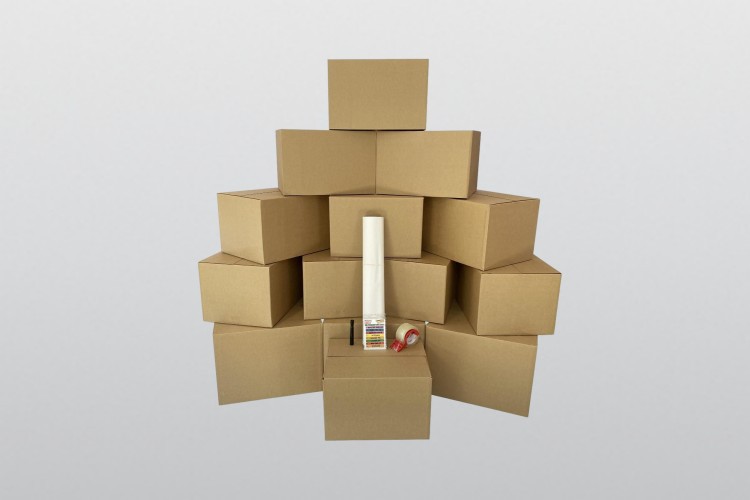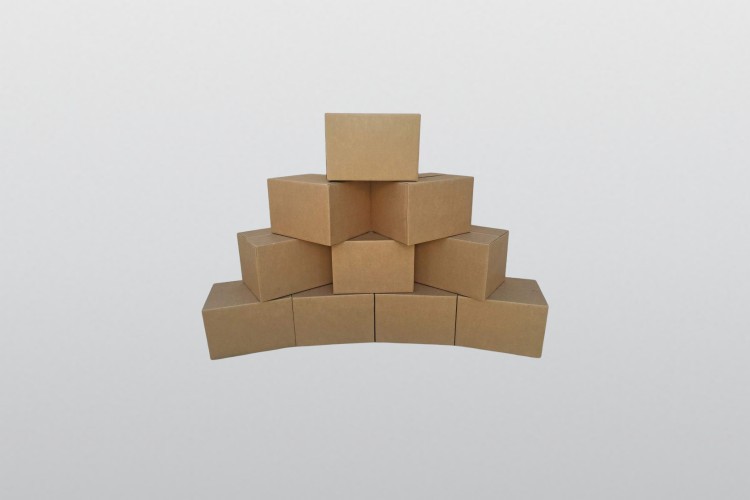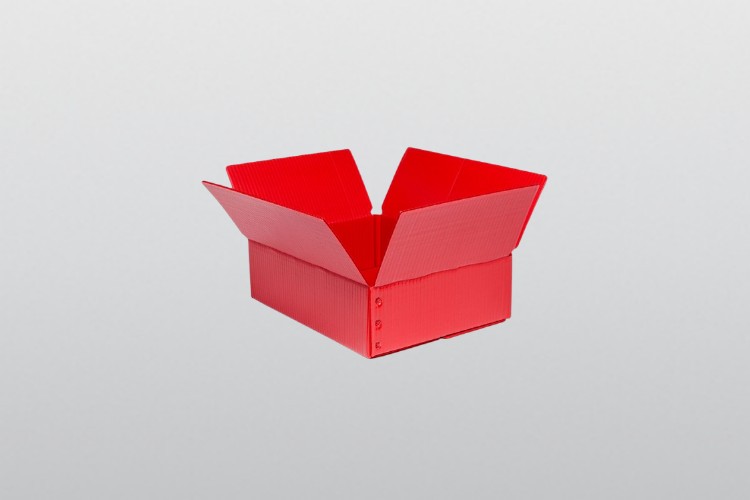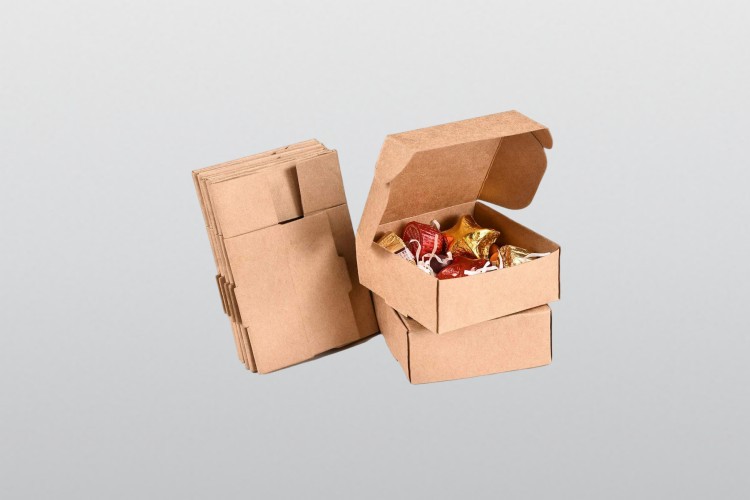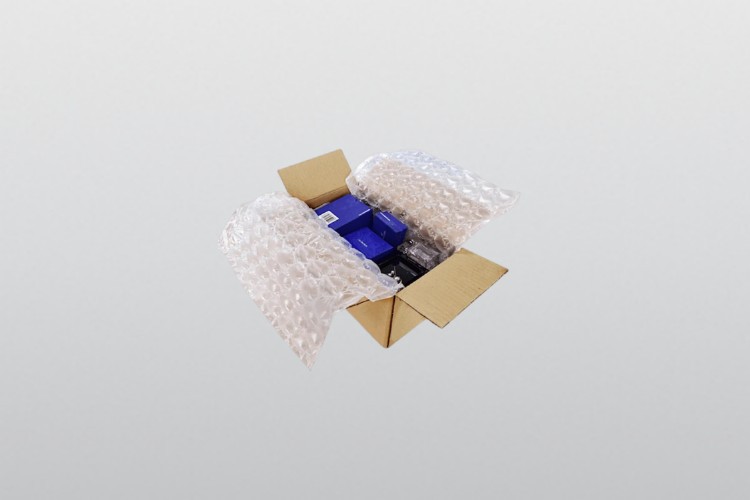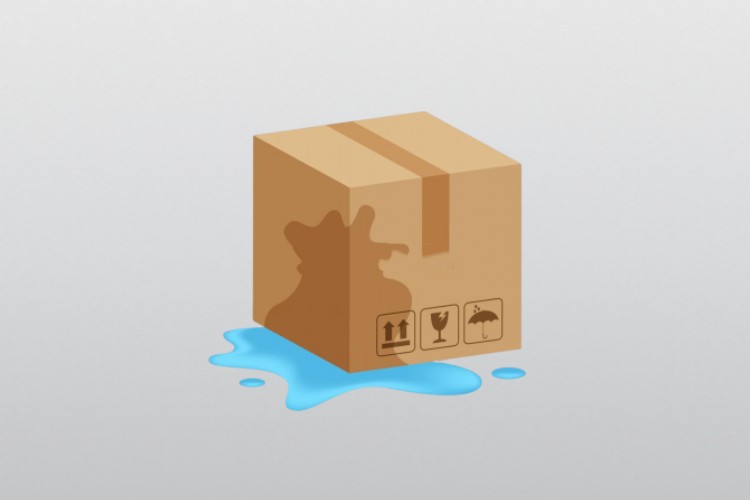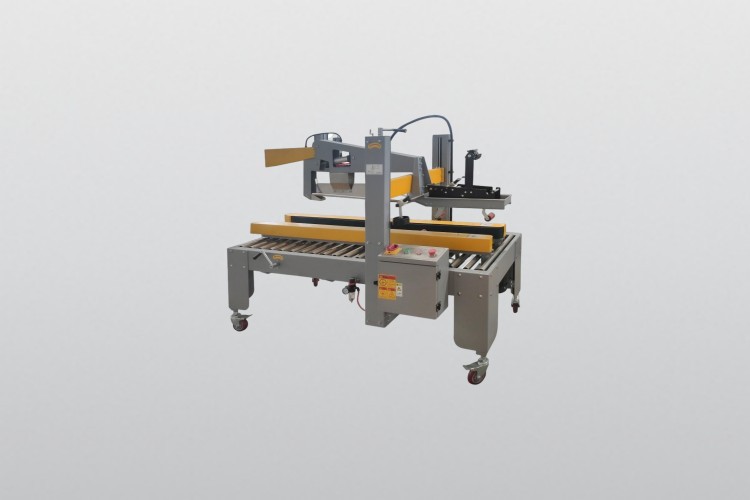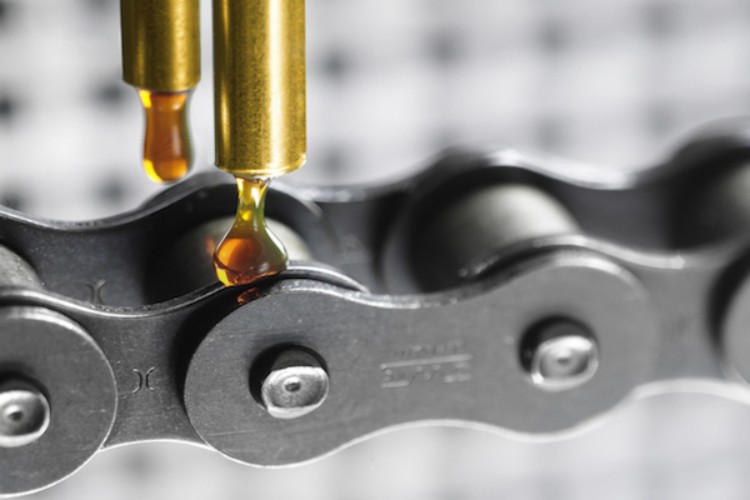Automatic Case Sealer: The Complete FAQ Guide In 2025
Do you need help with the constant juggling of packing materials, tape, and scissors? Well, we feel you. That’s why today, we’re here to share with your one magical solution: an automatic case sealer! This powerful packaging machinery automates the entire sealing process.
With its precise performance capabilities, easy-to-follow setup instructions, and strong construction material, this machine is sure to be an essential tool in any warehouse or industrial space that requires efficient packaging operations.
So if you want to purchase an automatic case sealer, this blog post will add to your information. Continue reading to learn more!
1.What Is An Automatic Case Sealer?
An automatic case sealer is packaging machinery that closes and secures the top of corrugated cases. The automatic case sealer applies adhesive tape or hot melt glue to the flaps on the top and bottom of the box, providing strong protection against dust and water damage during shipment.
This equipment usually has automatic feeders, motors, height adjustments, and flap folding adjustments. Depending on the model, some automatic case sealers can handle multiple box sizes, while others are designed for a specific box or size.
Automatic case sealers offer a cost-effective solution for businesses that need to package large quantities of products quickly. They can also help to reduce labor costs and increase productivity. With automatic case sealers, companies can ensure that the products they are shipping are secure and protected against any damage or tampering during transit.
2.What Are The Components Of An Automatic Case Sealer?
Automatic Tape Dispenser
It is the first component of automatic case sealers, providing adhesive tape from a roll to seal the container.
Drive Roller
It consists of small rubberized wheels that rotate at a certain speed to move the box along the conveyor belt to reach the automatic tape dispenser.
Clamping Assembly
It is used to hold the box in place during sealing, preventing it from slipping out of position and creating an uneven seal.
Side Guides
These rails are positioned along each side of the conveyor belt, ensuring that the boxes remain centered and aligned for even sealing.
Squeeze Arm
This arm presses the box closed, allowing it to be sealed with adhesive tape more efficiently and securely.
Control Panel
It is a user-friendly interface that allows you to start and stop the automatic case sealer, adjust various settings and monitor overall performance.
Pressure Sensors
They detect and control how much pressure is applied to the box during sealing, ensuring that it is sealed securely without being damaged.
Safety Interlocks
These sensors detect movement in front of the automatic case sealer and shut down the machine if someone gets too close. This prevents accidental injuries.
3.What Are The Advantages Of An Automatic Case Sealer?
- Cost Savings
Automatic case sealers provide immediate cost savings because they reduce the time needed to close and seal cases. This also reduces the labor costs associated with manual sealing, as automatic machines require less human intervention.
- Increased Efficiency
An automatic case sealer can significantly improve the speed and efficiency of your packaging line. Automated sealing technology can eliminate manual labor and reduce time spent on repetitive tasks. This results in increased throughput and fewer delays caused by human error.
- Improved Consistency
An automatic case sealer ensures that each package is sealed correctly and consistently, allowing for better product protection.
- Reduced Waste
Automatic case sealers provide improved accuracy and consistency, which helps reduce unnecessary waste caused by incorrect seals or damaged packages. This can lead to cost savings in the long run and an overall reduction in packaging materials.
- Safety Benefits
Manual case sealing can be dangerous and labor-intensive, requiring operators to lift and carry heavy cases. An automatic case sealer eliminates this risk and helps reduce potential injuries in the workplace.
4.What Are The Applications Of An Automatic Case Sealer?
- Food & Beverage Industries
Automatic case sealers have multiple uses in food and beverage products, such as sealing carton boxes containing chicken, beef, fish, fruits, vegetables, and other produce. They can be vital in ensuring these items remain fresh during transit by creating a secure seal that prevents air from entering.
- Pharmaceutical Industries
An automatic case sealer is essential for the pharmaceutical industry, ensuring that products are sealed accurately and securely when shipped out. This helps to avoid any contamination or leakage which can occur if boxes are not appropriately secured.
- Manufacturing Industries
Automatic case sealers also have applications in manufacturing, mainly when sealing finished parts and components ready for shipment. By creating a secure seal around these items, the automatic case sealer helps protect them from damage during transit and ensures delivery accuracy and product integrity.
5.What Are The Working Principle Of An Automatic Case Sealer?
Automatic case sealers work by loading the case onto an infeed conveyor belt. The case is then pushed through a series of rollers and automatic sensors, which detect the depth and size of the box.
Once these measurements are taken, an automatic taping head applies two or three strips of tape along the top flaps of the box. This seals the contents in securely, readying it for transport or storage.
In some automatic case sealers, the top flaps may also be folded and secured with tape. The automatic case sealer is an efficient way to quickly secure boxes and cases in warehouses, shipping centers, and other industrial operations.
6.What Are The Different Types Of Automatic Case Sealers Available On The Market?
a) Hot Melt Glue Sealers
This automatic case sealer uses hot melt glue, heated from an onboard melting unit, and applied to the top and bottom flaps to secure the box flap closure.
The application rate can be adjusted depending on the sealed box size and weight. It is suitable for cases with sharp edges or irregular shapes because it provides a strong bond that does not need animal glue or staples.
Components
Glue Gun
A hot glue gun is used to heat the hot melt glue and dispense it onto surfaces. The hot glue gun typically features a trigger mechanism, an adjustable temperature setting, and a replaceable nozzle that helps control the flow of hot melt adhesive.
Hot Melt Glue Sticks
Hot melt glue sticks are the hot melt adhesive that is inserted into the hot glue gun and heated to a liquid form. Hot melt glue guns use hot melt sticks that are formulated with thermoplastic polymers, waxes, resins and other materials for specific application needs.
Heat Resistant Plate
A heat resistant plate is typically included with hot melt glue guns and is used to keep any hot melt adhesive from dripping onto surfaces. The plate also helps protect hot melt glue sticks from accidental contact with foreign objects that may damage the hot melts or cause them to not stick properly.
Heat Resistant Mat
A heat resistant mat should be used in combination with a hot melt glue gun to protect the hot melt adhesive from direct contact with hot surfaces. The heat resistant mat also helps protect hot melt glue sticks from being damaged or burned by hot surfaces.
Hot Melt Glue Nozzles
Hot melt glue nozzles are typically included with hot melt applicator guns and attach to the hot melts in order to control the size and shape of hot melt glue being dispensed. Hot melt nozzles come in a variety of sizes, shapes and designs for specific hot melt adhesive application needs.
Hot Melt Dispensing Tips
Hot melt dispensing tips are typically included with hot melt applicator guns and attach to the hot melts in order to control the size and shape of hot melt glue being dispensed. Hot melt dispensing tips are also used to ensure hot melts are applied in a precise manner.
Hot Melt Transfer Pumps
Hot melt transfer pumps are typically used when hot melts need to be transferred from one container or surface to another in an efficient and safe manner. These hot melt transfer pumps feature adjustable flow rates and air pressure settings to ensure hot melts are dispensed accurately.
Working Principles
Hot melt glue sealers use hot melt adhesives to create a secure and durable seal. The hot molten adhesive is applied onto the substrate, which then quickly cools and hardens, forming an instant bond between the two materials being joined.
Hot melt sealers are used in many industries including food packaging, textiles manufacturing, medical device production, automotive assembly and other general industrial applications. The hot melt adhesive is typically housed in a tank or hopper which is heated to the correct temperature.
The hot melt glue is then dispensed through a nozzle onto the substrates where it forms an instant bond once cooled. In order to maintain a quality seal and ensure that the hot melt adhesive is applied consistently, hot melt glue sealers often use precise temperature and pressure control.
Applications
Hot melt glue sealers are used in a range of industries and applications, from manufacturing to packaging. One of the most common uses is sealing cartons and boxes for retail consumer products such as food, healthcare, electronics, and personal care items.
Hot melt glue sealers can also be used to bind materials together in woodworking or other construction projects, create labels and tags, and even waterproof items. In addition to these more typical uses, hot melt glue sealers also have applications in industries such as automotive, marine, aerospace, and medical device manufacturing.
b)Hot Knife Sealers
These automatic case sealers use hot knives to cut the flaps of your box, providing a strong yet flexible closure that won’t come undone. This type of sealer is ideal for sealing large, heavy-duty boxes and can operate at a high speed.
Components
Heating Element
This is the hot knife blade that seals the material being sealed, typically made of metal or ceramic. It is heated to a high temperature and pressed against the material for a short period of time in order to create a seal.
Cool Down Plate
The cool down plate helps to keep the hot knife blade cool after sealing, preventing damage to the hot knife sealer. It is usually constructed using metal or ceramic.
Pressure Plate
The pressure plate applies uniform pressure across the entire hot knife blade, ensuring a consistent and complete seal of the material being sealed.
Cutter Arm
The cutter arm is used to cut away excess material after the hot knife blade has sealed it. It is usually made of metal and is controlled by a motor or manual mechanism.
Knife Blade
The hot knife blade can be constructed from a variety of materials, including stainless steel or ceramics, depending on the application. It is typically heated to a very high temperature in order for it to effectively seal the material.
Control Panel
The control panel is used to control all of the hot knife sealer’s components, such as setting temperature and pressure levels. It may also include additional features such as timer settings and safety locks.
Working Principles
Hot knife sealers use a hot metal blade and a pressure roller to melt a thermoplastic material, creating an air-tight seal on the edges of the material. The hot metal blade is heated to a predetermined temperature, while the pressure roller applies pressure on the material, allowing it to be sealed quickly and effectively.
Applications
Automatic hot knife sealers are used in a wide variety of industries, such as packaging, electronics, food and beverage processing, medical device manufacturing and more. They provide an efficient and cost-effective way to heat seal products with a clean cut finish. Hot knife sealing is commonly used for closing plastic bags or pouches, trimming hot melt adhesive, binding fabrics and materials, cutting laminates, sealing paperboard cartons and more.
c)Random Case Sealers
This automatic case sealer uses a random pattern to apply adhesive tape across both top and bottom flaps to secure the box closure. It is suitable for medium-to-heavy-weight applications, such as those found in supermarkets and retail stores.
Components
Taping Head
This is used for applying tape to the random cases during operation. It generally consists of a taping head that can accommodate several rolls of tape, a holding mechanism to secure the random case in place and a drive system to move the random case under the taping head.
Pressure Roller
This is used to press the random cases against the tape during operation, ensuring a secure seal. It generally consists of two rollers that are positioned at an angle in order to apply pressure evenly across the random case.
Case Elevator
This is used to raise random cases to the taping head and pressure roller. It generally consists of a platform, lift chains/belts and motors that drive the lift system.
Pusher
This is used to feed random cases into the random case sealer. It generally consists of a pusher arm that can move back and forth between random cases and a motor that drives the pusher arm.
Input & Output Conveyor
This is used to move random cases into and out of the random case sealer. It generally consists of one or more conveyor belts as well as motors that drive the belts.
Electrical Control Panel
This is used to control all of the random case sealer components. It generally consists of a power switch and several buttons or switches to control the various machine functions.
Working Principles
Random case sealers use the random pattern method to quickly and efficiently apply pressure-sensitive tapes to the top and/or bottom of random sizes of cases. The random pattern method is an automated system that applies tape along a random (but predetermined) path.
This ensures a secure closure while allowing greater flexibility in accommodating random boxes and their varying sizes. Random case sealers are able to adjust the random pattern according to the size of random cases being sealed and provide even pressure on all sides of the random box, ensuring an air tight and secure closure.
The random sealers have advanced sensors that detect random boxes as they move through the infeed conveyor and apply tape at precisely the right moment. This ensures random boxes are securely sealed with no gaps or openings.
Applications
The applications for random case sealers include sealing boxes with random-sized products, such as clothing, automotive parts, electronics components, pharmaceuticals and food items. Random case sealers secure the packages without damaging them, ensuring that the product is safe and ready for shipping.
7.What Is The Difference Between Automatic And Manual Case Sealers?
a) Automatic case sealer
b) Manual case sealer
Automatic case sealers use automated sealing technology that seals the top and bottom of a box in one process, while manual case sealers require a human operator to close the box by hand.
Automatic case sealers are typically more expensive than manual ones since they come with features such as an automatic paper cutter, an automatic tape applicator, and automatic speed adjustment. However, automatic machines can save time and labor costs in the long run due to greater efficiency and increased production speeds.
On the other hand, manual case sealers are less expensive upfront but require more time and effort to operate correctly. Depending on your budget, workload, and other factors, either type could suit your business needs.
8.What Products Can Be Sealed Using An Automatic Case Sealer?
- Food Products
Automatic case sealers can be used to pack and close food items such as snacks, cereals, powders, spices, etc.
- Cosmetics
Automatic case sealers can be used to package and seal cosmetics such as creams, lotions, and other skincare products.
- Electronics
Automatic case sealing machines are ideal for sealing electronic components like wires, connectors, circuit boards, and even computer parts.
- Pharmaceuticals
Automated case-sealing machines can help seal pharmaceutical products such as pills, tablets, and capsules efficiently with minimal human interference.
- Chemicals
Automatic case sealing machines are great for packing and sealing chemicals like industrial solvents, lubricants, and other hazardous materials.
- Clothing
Automatic case sealing machines are also perfect for neatly packaging clothes like suits, shirts, trousers, and skirts with minimal manual effort.
9.How Can Automatic Case Sealers Be Used To Increase Productivity And Efficiency?
- Automating the Sealing Process
Automatic case sealers simplify and automate the sealing process, reducing the labor needed to close cases while increasing efficiency. This leads to improved productivity, as more cases can be sealed quickly.
- Accurate Case Sealing
Automatic case sealers are programmed with settings allowing consistent, closed seals on all cases. This eliminates product damage caused by weak seals or open corners that can occur when manually closing cases.
- Streamlining Packaging Lines
Automatic case sealers reduce line clutter and worker congestion by eliminating manual steps such as taping or stapling boxes shut, streamlining production lines, and simplifying processes.
- Reduced Costs
By automating the case sealing process, automatic case sealers can help to reduce labor costs and materials such as tape or staples. Additionally, automatic case sealers maintain consistent seals, reducing product damage and avoiding costly re-work or rejections.
10.What Materials Does An Automatic Case Sealer Handle?
- Cardboard
Automatic case sealers work with single and double wall cardboard boxes, providing a secure closure for all your shipping needs.
- Corrugated plastic
Many automatic case sealers are designed to handle corrugated plastic, an ideal material for moisture-sensitive items that need to be shipped in protective packaging.
- Kraft Paper
These machines can quickly seal Kraft paper boxes with glue or tape, providing excellent protection against dust and other elements during transit.
- Bubble wrap
Automatic case sealers can seal bubble wrap around a box’s edges for extra cushioning and protection against shifting during shipment.
11.What Are The Safety Measures Taken When Using Automatic Case Sealers?
- Wear Protective Gear
It is also advisable to wear safety goggles, gloves, and any other protective gear when operating automatic case sealers. This will help protect against accidental contact with hazardous materials or components of the machine.
- Proper Work Area Setup
The area around automatic case sealers should be clear of debris and other obstructions that could cause accidents or interfere with the operation of the machine. Also, proper work area lighting can help prevent accidents from occurring due to poor visibility.
- Unplug the Machine
After use, automatic case sealers should always be unplugged to prevent accidental operation while not in use.
- Follow Manufacturer Guidelines
Always follow the manufacturer’s safety guidelines and instructions when using automatic case sealers. These guidelines should include information on adequately operating, maintaining, and troubleshooting automatic case sealers and other general safety advice for operators.
12.What Are the Common Problems Associated With Automatic Case Sealers And Their Possible Solutions?
Below is a list of some of the most common issues associated with automatic case sealers and their possible solutions:
- Leaky seals
This can occur due to poor quality of adhesive material or improper flaps closing before passing through automatic case sealers.
Solutions
Selecting high-quality hot melt adhesive materials, properly aligning side flaps before they enter the automatic case sealer, and having a clear understanding of the automatic case sealer’s capabilities.
Incorrect size or seal
This can happen when automatic case sealers are incorrectly calibrated, and the sealing machine needs to be set to the correct specifications for the package size.
Solutions
Regularly checking and calibrating automatic case sealers, using flexible automatic case sealers that can be adjusted for different size packages, and using automatic case sealers with automatic calibration features.
Contamination due to misalignment of side flaps
When side flaps are not correctly aligned before they enter the automatic case sealer, it can cause contamination as dust and other particles may get into the package through gaps in the adhesive.
Solutions
Ensuring proper alignment of side flaps before they enter the automatic case sealer by hand-guiding them or using automatic flap-folding and tucking machines.
- Poor adhesion
This is often caused by incorrect settings on the automatic case sealer, inadequate pressure applied to activate the adhesive, or poor quality of adhesive material used.
Solutions
Ensuring proper calibration of automatic case sealers, verifying that sufficient force is applied during sealing, and using high-quality hot melt adhesive materials.
13. Is There An Easy Way To Monitor And Troubleshoot The Automatic Case Sealer?
Yes, there is! Fortunately, automatic case sealers come with integrated monitoring and troubleshooting tools. These tools can help you keep track of your automatic case sealer’s operations and diagnose any issues quickly and easily.
Monitoring features such as performance tracking, real-time alarms, status indicators, and historical data logs provide detailed information about the automatic case sealer’s operations. This helps identify problems more quickly so troubleshooting solutions can be applied promptly.
Troubleshooting features such as automatic error detection and code recognition enable users to understand what is causing an issue faster. Some automatic case sealers also have built-in maintenance reminders to ensure that all components run smoothly.
14.What Are The Maintenance Procedures Of An Automatic Case Sealer?
- Lubrication
Automatic case sealer moving parts should be lubricated regularly according to manufacturer instructions, with any excess oil, wiped off when finished. This will help keep all components operating smoothly for maximum efficiency and performance over time.
Cleaning
Automatic case sealers should be cleaned daily to remove any adhesives and debris accumulated during sealing. This will ensure the machine runs efficiently and reduce the chances of breakdowns due to material build-up.
Inspection
automatic case sealers should be visually inspected regularly for signs of wear or damage; such as cuts in belt surfaces or missing parts. Any problems should be addressed immediately before they become worse.
Performance Check
Automatic case sealers should also be checked for performance regularly. This includes verifying that the seals are complete and tight, that the machine is running correctly, and that there are no leaks or other problems with the unit’s operation.
Proper Storage
Automatic case sealers should be stored properly when not in use to ensure they are ready to operate as soon as possible after being taken out of storage. This will help maintain their performance and reduce wear on moving parts due to the lack of use over time.
Service & Repair
Automatic case sealers should be serviced periodically by a trained technician according to manufacturer instructions to keep them running efficiently and to identify any potential problems before they become too severe. Any repairs should also be carried out immediately in order to keep the machine operational and minimize downtime.
15. What Factors Should Be Considered Before Purchasing An Automatic Case Sealer?
The key factors below should be considered before purchasing an automatic case sealer:
- Budget
Before purchasing an automatic case sealer, it is crucial to consider your budget, as automatic case sealers can vary significantly depending on the features offered. Make sure you get the best value for your money by researching different models and finding one that fits your budget.
Capacity
The capacity of an automatic case sealer should be considered before making a purchase. Automatic case sealers come in various sizes and abilities, so it’s essential to determine how often and how much product you will need to package when selecting an automatic case sealer.
Speed
Most automatic case sealers have adjustable speeds, which allow for faster or slower operation, depending on your needs. Make sure to select an automatic case sealer that can accommodate the rate at which your product is packaged.
Ease of Use
Automatic case sealers should be user-friendly and easy to operate. Make sure that the automatic case sealer you select has clear instructions and simple controls so your employees can quickly learn how to use it.
Durability
The automatic case sealer you purchase should be durable enough to stand up to frequent use in a busy production environment and require minimal maintenance for optimal operation.
Maintenance costs
Look for automatic case sealers with reliable components and designs that make servicing and repair easier when necessary.
Compatibility
Some automatic case sealers are designed to work exclusively with certain packaging materials, so make sure you select the automatic case sealer that is compatible with the type of material you will use for your product.
Conclusion
In the market for a packing machine that will help take your business to the next level? Check out our automatic case sealer. This top of the line equipment is just what you need to ensure that your products are securely packaged and ready for transport. If you have any questions or would like to place an order, please don’t hesitate to contact Allpack today. We’ll be happy to assist you further.
Don't forget to share this post!
CONTACT US
Tell us your raw material and project budget to get quotations within 24 hours.
WhatsApp Us: +86 181 7101 8586
The Buyer's Guide
